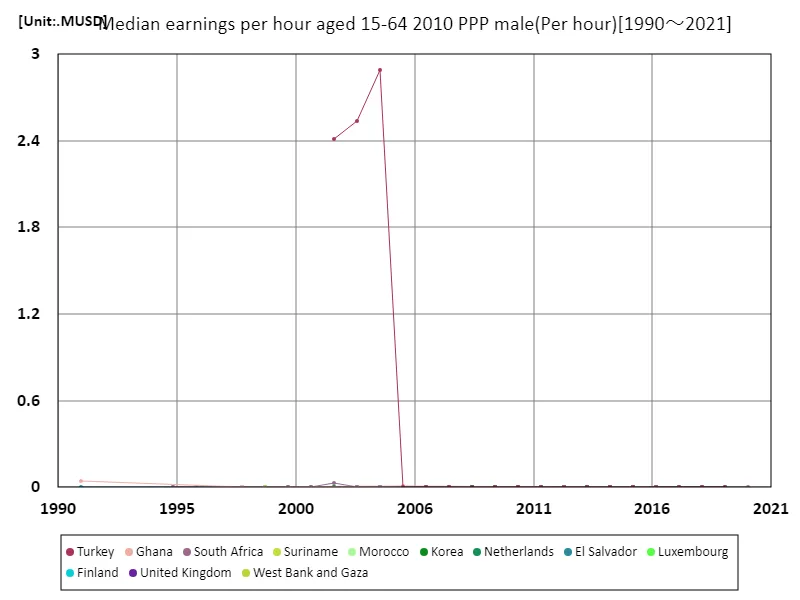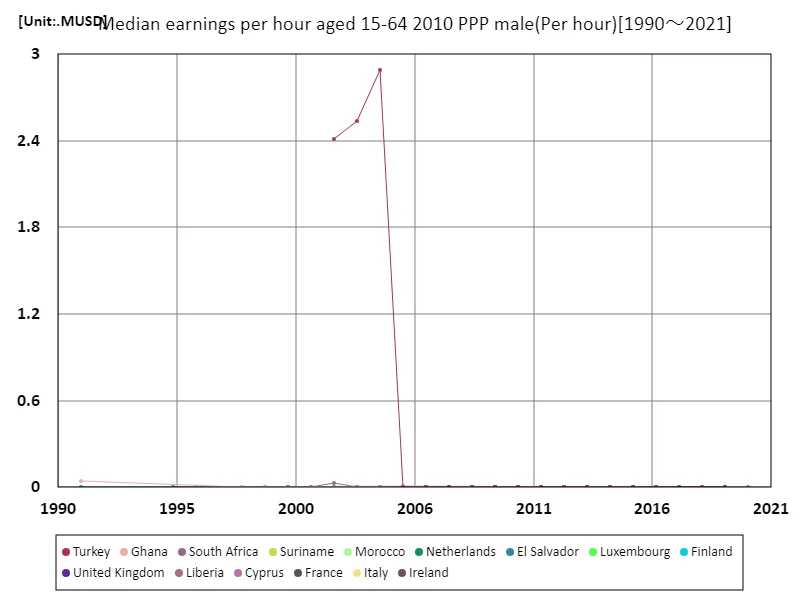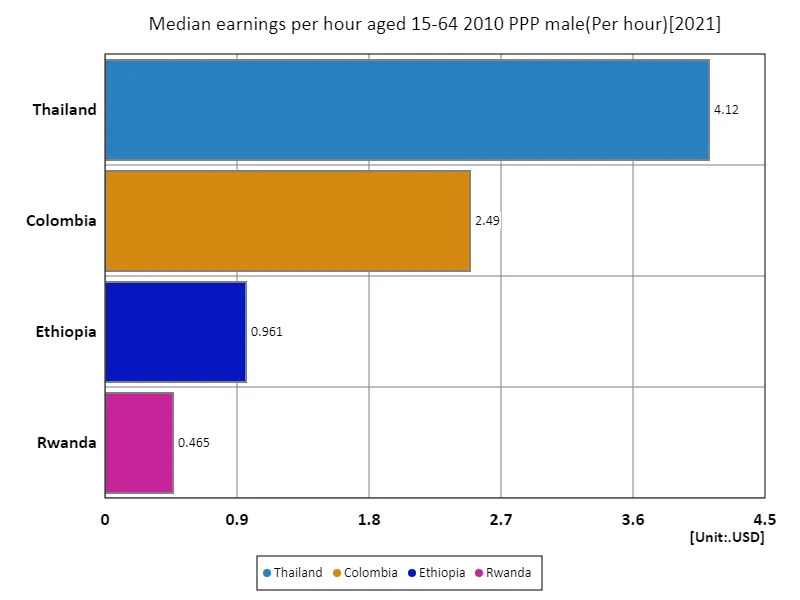Abstract
Over the past decades, global wage trends have reflected disparities across regions, with wealthier countries typically showing higher average hourly wages. In 2020, South Africa’s average hourly wage for men aged 15-64, adjusted for 2010 purchasing power parity (PPP), was 3.07 USD—markedly higher than many other developing nations. This suggests South Africa’s wage growth outpaced other similar economies. Historically, wages in emerging markets like South Africa have risen as these countries develop industrial sectors, but they remain low compared to global leaders, especially in North America and Europe.
Average hourly wage (men, ages 15-64, 2010 purchasing power parity)
Since 1991, global trends in average hourly wages (men, ages 15-64, 2010 PPP) have shown notable fluctuations. Turkey’s peak wage of 2.89 USD in 2004 stands out, but it currently stands at just 161% of that peak. This suggests a stagnation or decline in real wage growth relative to past highs, potentially due to inflation, currency devaluation, or economic instability. Overall, developed economies like those in Europe and North America maintain higher wages, while emerging markets, such as Turkey, face wage growth challenges despite improvements in industrialization and economic development over the decades.


The maximum is 2.89MUSD[2004] of Turkey, and the current value is about 161μ%
Average hourly wage (male, 15-64 years old, 2010 purchasing power parity) (worldwide)
From 1991 to 2020, global trends in average hourly wages (men, ages 15-64, 2010 PPP) show significant variation. Turkey’s peak wage of 2.89 USD in 2004 remains the highest recorded, but currently, wages are only 161% of that level, indicating a substantial decline in real wages relative to past highs. This decline can be attributed to inflation, currency depreciation, and economic challenges. While developed economies have seen more stable wage growth, emerging markets like Turkey face more volatility, with growth periods often followed by stagnation due to economic instability and external factors.


The maximum is 2.89MUSD[2004] of Turkey, and the current value is about 161μ%
Average hourly wage (male, 15-64 years old, 2010 purchasing power parity) (nations around the world, latest year)
In 2021, Thailand emerged with the highest average hourly wage globally at 4.12 USD, surpassing the world average of 2.01 USD. This suggests a significant rise in Thailand’s wages relative to other economies, reflecting its growing industrial base and labor market shifts. The total global average of 8.03 USD points to broader economic disparities, with high-income regions like North America and Europe maintaining higher wages, while many emerging economies remain well below this threshold. Overall, trends show widening wage gaps driven by differences in economic development, industrialization, and inflation rates.


The maximum is 4.12USD of Thailand, the average is 2.01USD, and the total is 8.03USD



Comments